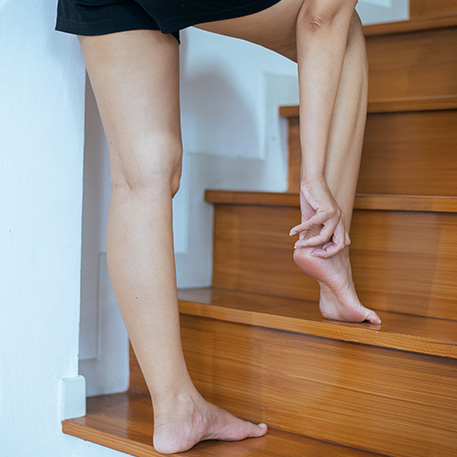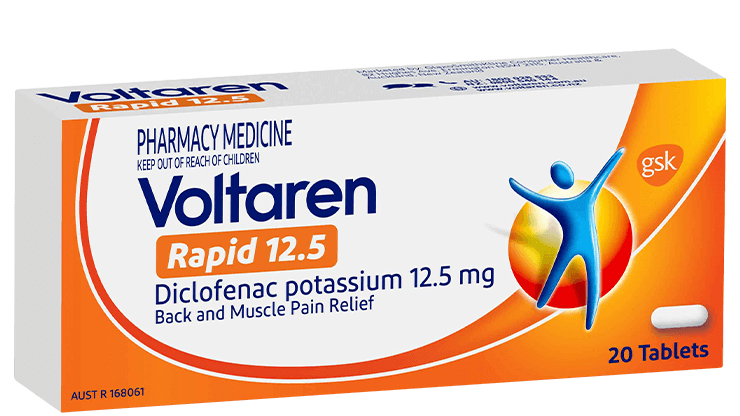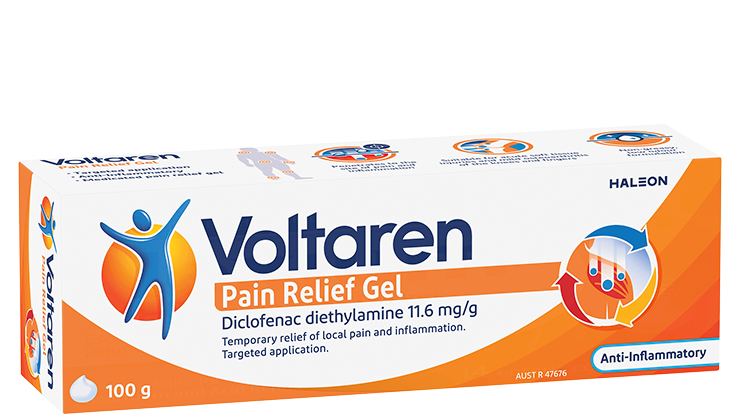Foot pain or ankle pain has a way of taking us out of our daily routines and keeping us from the daily activities that give us a sense of identity and joy. A sore foot or ankle can make it difficult to carry out everyday activities like walking the dog, climbing the stairs, running for the bus and playing sports. Here we take a look at some common causes of foot and ankle pain so you can get back on your feet.
Most of us have experienced foot or ankle pain at some time. The causes of pain in the foot... and ankle can range from something as simple as shoes that don’t fit properly to a sprain or strain or a fractured bone.
Foot and ankle pain can be especially important to address. Because you are likely on your feet a lot throughout the day, understanding what’s causing your foot pain is important for getting the treatment that will keep a smile on your face and a skip in your step.
Symptoms of foot and ankle pain
Foot pain and ankle pain, when not caused by direct and acutely painful injury such as a sprain, can be experienced as an intense, dull ache that may increase when weight or pressure is applied.1 Foot and ankle pain caused by a flareup of inflammation due to osteoarthritis can be acutely painful as well as being part of an ongoing condition.
Feet are complex structures made up of 26 bones, 30 joints, and numerous muscles, tendons, ligaments, and nerves.2 Because our feet and ankles are quite structurally complex, ankle pain symptoms and foot pain symptoms may be felt in many different areas. For example, you might feel pain in your toes, in the arch of the foot, in the heel, or in the ankle joint.

Symptoms and signs that all is not right with your foot or ankle include:
- Pain! Whether it’s sharp, or dull, intense soreness in the foot or ankle
- Swelling
- Stiffness
- Bruising
- Redness
- Decreased range of motion
- Inability to bear weight
- Numbness

High heels or poorly fitting shoes
Wearing shoes that don’t fit your feet properly can cause foot pain, especially if you are on your feet for long periods of time throughout the day. Sometimes it’s best to prioritize comfort over looks when it comes to footwear. Choose shoes that will provide proper support throughout the day. In the longer term, wearing ill fitting shoes can lead to bunions.
Bunions are painful bony bumps that develop at the joint where the big toe meets the foot, on the inside of the foot6 . The big toe can start to lean towards the second toe, and make it painful to walk.
Fractured or broken bones
A common ankle and foot pain cause is a broken bone. If you have a fractured or broken foot or ankle, you may notice any of the following... symptoms:7
- sudden, throbbing pain that increases with activity and decreases with rest
- swelling
- bruising
- tenderness
- deformity (e.g. your foot may look misshapen or your ankle may seem to be at an odd angle)
- difficulty walking or bearing weight on the affected foot
A fracture or break is usually caused by some kind of trauma, for example a fall or misstep, impact from something heavy being dropped on your foot, or a car accident. If you suspect you may have a fracture or break, speak to a healthcare professional.
Sprains
Sprains are a common cause of ankle pain. They occur when ligaments are stretched, twisted or torn, resulting in a swollen ankle that hurts. It may be a sprain if you’re experiencing pain, tenderness, weakness, swelling, bruising, or muscle spasms/cramps around your ankle or foot, and you cannot put weight on the injury.8
Stress fractures
Stress fractures can develop in people who engage in certain sports, like gymnastics9 and long-distance running10 conversely, stress fractures can also occur as a result of obesity, as the feet and ankles are carrying extra weight which puts them under pressure.11

Tendonitis or Bursitis
Tendons are the bands of tissues that attach your muscles to your bones. If they are used a lot or injured, they can become inflamed, which is called tendonitis.
Bursitis is a condition that affects the small, synovial fluid-filled sacs – called bursae – that cushion the bones and tendons near your joints. These sacs can also become injured or inflamed through overuse, resulting in bursitis. Bursitis most often occurs in joints that are used in frequent, repetitive motions.12
Both conditions can affect the feet and ankles, particularly common are Achilles tendonitis, or to experience these conditions if you have flat feet or high arches.13
Osteoarthritis
Some people experience osteoarthritis in their foot joints or ankle joints. Osteoarthritis is a condition associated with the degradation of cartilage - the material that acts as a cushion between joint bones – thereby creating stiffness, pain, and decreased range of motion. Osteoarthritis can cause ankle pain or foot pain, especially when the condition causes inflammation to flare up.

Depending on what’s causing your foot or ankle pain, you can also use different types of over-the-counter pain relief. If you’re not sure what’s causing the pain it’s worth discussing with your pharmacist before selecting a product.
You can try Voltaren Pain Relief Gel if your foot or ankle pain or swelling is due to sprains, strains, bruising, or sports injuries, that have caused trauma to a tendon, ligament, muscle or joint in your foot or ankle. You can also use Voltaren Pain Relief Gel on tendonitis or bursitis. Please read the label to ensure Voltaren is the right product to relieve your pain.
Voltaren Pain Relief Gel contains a pain relieving anti-inflammatory that will help get you back on the way to doing the simple things that bring you joy, like dancing in the living room when a favourite song comes on.

Read more for targeted tips on relieving pain in your feet and ankles so you can regain the joy of movement and mobility.
If your foot pain symptoms or ankle pain symptoms include severe pain, swelling, or an open wound, you should see a doctor. It is also important to see a professional if you’re unable to put weight on your foot or find it difficult to walk, or if you have burning pain or numbness. Your doctor may perform a physical examination, order imaging tests such as an X-ray or MRI, and give advice on what management options are most appropriate to use for sore feet or ankles.
Explore Voltaren’s products for pain relief
Health, wellness & your pain
Pain is rarely just physical nor is it always solved by taking medicine alone. Voltaren is your ally in helping you take more control of your pain journey, from the way to sleep, to what you eat, mental wellbeing and complementary pain relief therapies.













